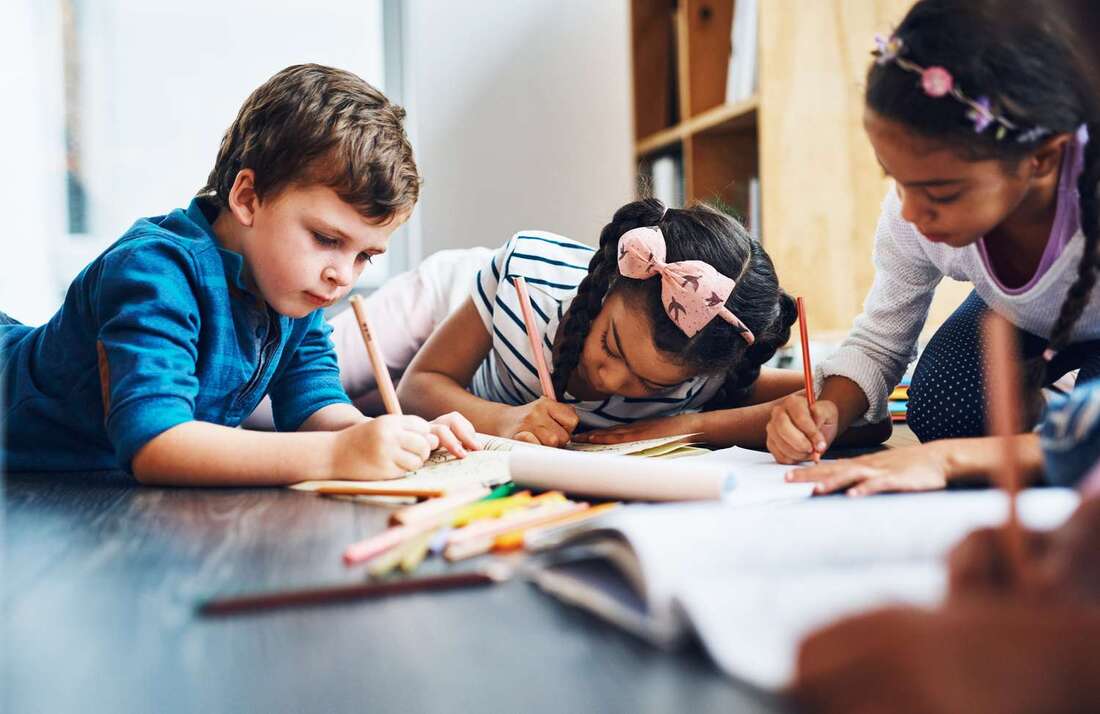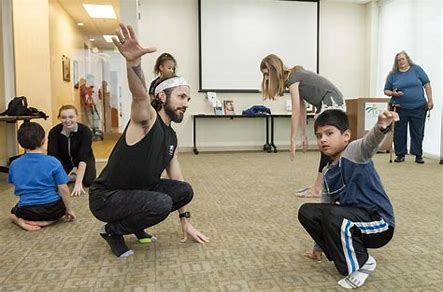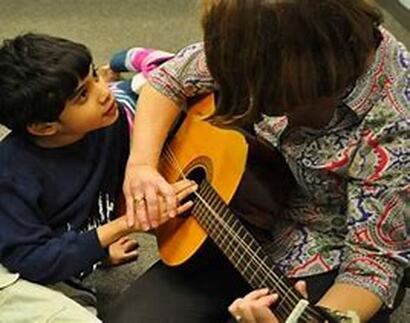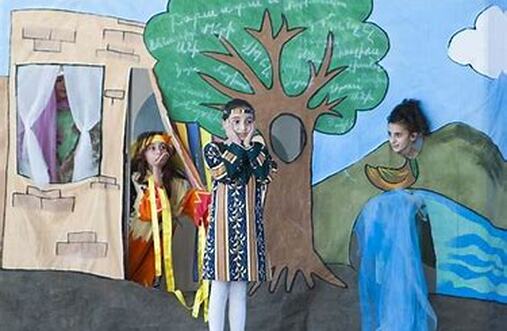What is the most concerning or destructive thing that is going on right now in your child’s world?
Next we look at –
Luker, S. (2024) UNIT 7– 7 CAMs
Section 7: CAMs Complementary & Alternative Medicine
PART 4 –
7. creative therapy
a. introduction
b. art
c. music
d. dance, theatre
e. adventure therapy
8. facilitated communication
UNIT 7– 7 CAMs
Section 7: CAMs Complementary & Alternative Medicine
PART 4 –
7. creative therapy
Creative therapy here covers a. Art therapy, b. Dance therapy, c. Music therapy, d. Theatre therapy, e. Adventure therapy.
Tubbs (2007) talks about parents, who’ve seen moments of awareness in their children which have surprised and delighted them. When all three are synchronized, the spiritual, the body and mind we have an integrated human being, even with autism.
Your child’s spiritual nature may flash through in times of joy or interest. Children with autism can be moved by classical music or beautiful colors and encouraged to paint wonderful pictures.
Rudy, L.J. (2020) reasons that if your child might be interested in music, visual arts, acting or dancing then s/he may respond well to art therapies. These are out-of-pocket programs which may build skills and expand boundaries, but may be costly.
Scope, A., & Uttley, L., et al. (2017) reported that art therapy is considered to be an acceptable treatment for the majority of respondents. Saying that art therapy can involve using painting, clay work, and other creative visual art-making art forms; including creative digital media. There is no definitive criterion for those routinely referred for this therapy, according to these authors. The populations considered here were non-psychotic respondents with anxiety, depression and stress management issues; plus, art therapy is suggested to reduce the person’s isolation, due to autism.
Squaresky, M. (2014) states – four-year-old Greg sat next to me at the kitchen table. I took out a marker and tried to draw Cookie Monster. Unable to communicate with my son verbally, I decided to try to connect with him through art. Greg showed that he was able to learn, but his learning was mainly visual.
I drew Cookie Monster for a month or so, and being unable to draw anything more complex, I didn’t try other characters. Greg watched me, saying, “Go Dabba”, and “more.” Speech appeared only in bits. After producing each new sketch with his scented markers, Greg smelled the Cookie Monsters.
< My Thoughts > “…I decided to try to connect with him through art.”
When our non-verbal Sonny was a 9-year-old, he was moved to a new school classroom. As you entered his new room, there was a bulletin board by the door. From the very first day, Sonny always stopped to gleefully greet the Sesame Street characters posted there. Much as one would genuflect when entering a church. The teacher remarked to me that Sonny didn’t seem to acknowledge her or the classroom aide, but always stopped to excitedly coo and pat the Sesame Street gang on the wall, his welcoming friends.
At first, we couldn’t figure it out, and then we realized that he had interactive board books at home filled with those characters – Elmo, Cookie Monster, and Big Bird. Now we had a new way to connect with him. And, we were able to get that much closer to understanding how he connected to the world around him. Much like Greg, these were his ‘best friends forever’ (BFFs), at home and at school.
b. Dance therapy
Dance/Movement Therapy – Hildebrandt, M. & Koch, S., et al. (2016) looked at a randomized controlled study of 78 participants, between the ages of 14 and 65 years; reflecting the broad autism spectrum. They did screen and omit those with more severe symptoms and those who could not speak. The program was led by two female dance therapists providing ten weekly sessions and a 6-month follow-up.
Du, L. & Greer, R. (2014) tell us that imitation is regarded as a critical learning milestone in child development. The ‘mirror’ has long been considered an indispensable tool to direct imitation in dance training. Studies of brain imaging shows that learning face-to-face, or ‘mirror’ image, requires a higher order of responding/thinking. So, when a child reverses motor imitation by completing a motion which is the opposite of their perspective that is regarded as a milestone of cognitive development. For this reason, Du & Greer question whether children with developmental delays can learn to imitate from ‘mirror response’ training, and/or face-to-face training (such as they would in a Dance Program).
Colson, E., & Colson, C. (2010) recalled, Garry and I would dance with Max as we listened to pop rock and country western music. We loved to hold Max, look at him, drink him in like a sweet elixir.
Max was always looking up, drawn to the skylights in our home. As we danced, his eyes would widen as the lacey blue of his irises would overtake his pupils. “Skylight,” we would whisper.
Menear, K., Smith, S., et al. (2006) muse that many persons with autism avoid anything associated with exercise, gym, music or dance. Their informal observations have shown that many students with autism who have low motor skills and fitness abilities have initial difficulty traversing typical school or park playground equipment without assistance. They have poor eye-hand coordination, trouble combining multiple motor skills into one task, and any structured balance related physical activities or group activities can be difficult. But it can help if they can exercise to music.
< My Thoughts > “…exercise to music…”
The CDC advises you to give your child the opportunity to learn and sing songs from memory and exercise to music.
Landau, E. (2013) looks into brain regions involved in movement, attention, planning and memory scans consistently showed activation when participants listened to music, these are structures that don't have to do with auditory processing itself. This means that when we experience music, a lot of other things are going on beyond merely processing sound.
< My Thoughts > “…processing sound. experiencing music…”
Music is amazing! We use a different part of the brain to understand and enjoy music. In our travel bag, we carry a small cassette player which plays classical music for Sonny when he is in stress mode, or after having a seizure. As a teacher, I have had students with autism react favorably to hearing music while they are learning a task. Shopping in stores is so much easier with Sonny if he can hear piped-in music being played.
In our classroom, there was a great student aide, but with the annoying daily habit of listening to her MP3 player through earbuds. When her student started screaming in protest about continuing to work on the puzzle in front of him, I motioned for her to put one of her earbuds in his ear. Truly, it was like flipping a switch. He calmed down and became compliant and cooperative. Often, discoveries like this don’t last; but, this one did. At first, the parents couldn’t believe how music changed him. But soon, they provided him with his own player and the Mariachi tunes he heard at home. Truly, music can be amazing!
Staff Writer (2015) – ‘Music’ is processed on the right side of the brain, whereas ‘speech’ is processed on the left side of the brain. Our brains process music in the same area where memories are created and stored.” When our brain attaches a positive feeling or a positive memory related to a song, the body produces ‘feel good’ hormones like ‘dopamine’ while listening to that song.
Stevens, C. & Stevens, N. (2011) shares, 31% At the end of the first term, I was driving David home from Music Space school when the nursery-rhyme tape ended. Before I could flick it over, a clear, high voice sang, “In the bad, bad lands of Australia!’
I called Nicky at the office. I just heard our son’s first words. Some little boys say Dada’ … David had launched into a music-hall number about a faulty boomerang.
< My Thoughts > “I just heard our son’s first words.”
Music is amazing. Imagine hearing your child’s first words in ‘song’. We apparently use a different part of the brain to understand and enjoy music. As a parent, we carry a toy cassette player which plays classical music for our Sonny when he is in stress mode, or coming out of a seizure.
Lai, G., Pantazatos, S., et al. (2012 ) believe that, “Despite language disabilities in autism, music abilities are frequently preserved. Paradoxically, brain regions associated with these functions typically overlap…” making it possible for learning musical pieces. Especially songs.
Corbett, B., Gunther, J., et al. (2011) and her colleagues evaluated a theatrical intervention program called SENCE (Social-Emotional Neuroscience & Endocrinology) Theatre. This Theatre Therapy was designed to improve socio-emotional functioning and reduce stress in children with autism. In this study, eight children with ASD were paired with typically developing peers that served as expert models.
Baiguerra, T. (2018) believes that moving to London from Australia to train with a theatre company there in physical theater as a performer and folk musician fulfilled her career and life choices. Before an Asperger’s diagnosis, she says that she wasn’t always able to make sense of things that everyone else found straightforward. That her powerful journey also included feeling of fear, loneliness and shame, which is projected onto many people with a neurodiversity and/or radically different disabilities.
A Theatre Therapy program specialist is – the person or persons leading the program. They should be Registered Drama Therapists, whose training prepares them to help participants tell their stories, express their feelings, solve problems, set goals, explore interpersonal relationship skills and strengthen their own life roles.
A Registered Drama Therapist (RDT) has completed master’s level coursework in psychology and drama therapy. Also, he or she would have experience in theatre and have had a supervised internship and work experience in the field. RDTs are board certified by the North American Drama Therapy Association. As well as creating a drama therapy practice, one must meet all professional standards, certification, and licensing.
< My Thoughts > “…meet all professional standards…”
Remember, as well as creating a practice or program, the principal must meet all qualifying professional standards, certification, and licensing. It is up to you to find out if they do.
References:
Baiguerra, T. (2018). My Brain Isn’t Broken; Retrieved online from – TED Talks London.
Colson, E., & Colson, C. (2010). Dancing With Max: A Mother and Son Who Broke Free; eBook Edition.
Corbett, B., Gunther, J., et al. (2011). Theatre as Therapy for Children with Autism Spectrum Disorder; Journal of Autism & Developmental Disorders; V41, p505-511.
Du, L. & Greer, R. (2014). Validation of Adult Generalized Imitation (GI) & the Emergence of GI in Young Children with Autism as a Function of Mirror Training; Psychological Record; V64, p161-177.
Lai, G., Pantazatos, S., et al. (2012 ). Neural Systems for Speech & Song in Autism. Journal of Neurology; Vol. 135:3, p. 961-975.
Landau, E. (2013). This Is Your Brain on Music; CNN, Retrieved online from – www.cnn.com/2013/04/15/health/brain-music-research/
Luker, S. (2024); Know Autism, Know Your Child with < My Thoughts > by Sara Luker; Retrieved online from – www.sarasautismsite.com
Menear, K., Smith, S., et al. (2006). A Multipurpose Fitness Playground for Individuals with Autism; Journal of Physical Education, Recreation & Dance.
Rudy, L. (2020). What is the Best Treatment for Autism?; Very Well Health Online, Retrieved online from – https://www.verywellhealth.com/the-best-treatment-for-autism-4585131/
Scope, A., & Uttley, L., et al. (2017). A qualitative review of service user & service provider perspectives on the acceptability, relative benefits, & potential harms of art therapy for people with non- psychotic mental health disorders; Psychology & Psychotherapy: Theory, Research & Practice; V90, p25-43.
Squaresky, M. (2014). A Spot on the Wall; eBook Edition.
Staff Writer (2015). Fun Facts about Music & Your Brain; Retrieved online from –keychangesmusictherapy.com/2015/09/fun-facts-about-music-and-your-brain/
Stevens, C. & Stevens, N. (2011). A Real Boy: How Autism Shattered our Lives & Made a Family from the Pieces; eBook Edition
Tubbs, J. (2007). Creative Therapy for Children with Autism, ADD, & Asperger’s: Using Artistic Creativity to Reach, Teach, & Touch Our Children; Square One Publishers, Garden City Park, N.Y.; Foreword.
End of DAY TWENTY-FIVE. To be continued in DAY TWENTY-SIX.
Note: Excerpts from the books – (13% indicates location in the Kindle version of the eBook, instead of page numbers).
Sharing of my website and BLOG Comments welcomed. Thank-you to those of you who have sent comments... much appreciated!
Regards,
Sara Luker




 RSS Feed
RSS Feed